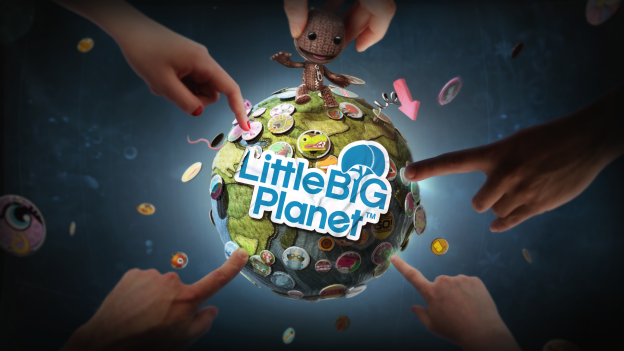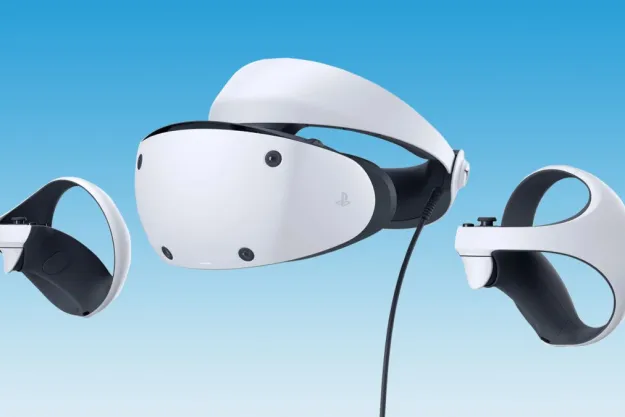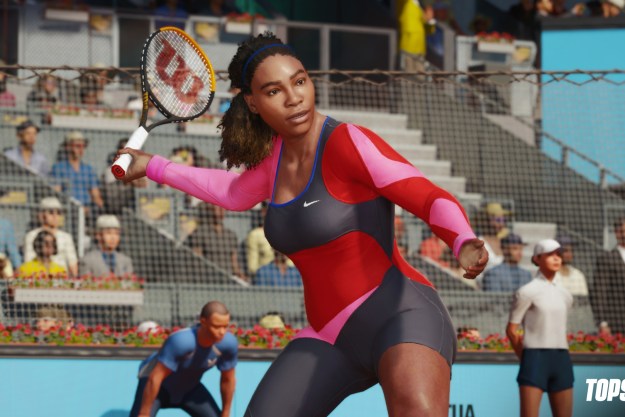 Years from now, when we are old and decrepit, annoyed by the music of the future whippersnappers that will be too-loud, and bewildered by the gaming systems that our children’s children understand with annoying ease, yet we can barely turn on, we will likely look back to these waning days of traditional console gaming with nostalgia tinted fondness. And when we do, one of the series that will likely stand out as a defining title of this generation of consoles is the Sony exclusive, LittleBigPlanet.
Years from now, when we are old and decrepit, annoyed by the music of the future whippersnappers that will be too-loud, and bewildered by the gaming systems that our children’s children understand with annoying ease, yet we can barely turn on, we will likely look back to these waning days of traditional console gaming with nostalgia tinted fondness. And when we do, one of the series that will likely stand out as a defining title of this generation of consoles is the Sony exclusive, LittleBigPlanet.
The game came out of nowhere when it first debuted in 2008, and has in many ways defined the PlayStation 3. It combines smooth and solid animations with creative designs, and a huge number of options to customize and share your own creations. That is simply something that could not have easily been done on a console before the PS3, and it is something that PS3 owners have gravitated around. It helps that the platforming controls are masterfully handled, making the series one of the most fun to play. Plus, Sackboy is kinda adorable and makes for a good de facto mascot for the PS3.
So with the franchise among Sony’s best and brightest, it was no surprise to learn that the Vita would soon be getting an iteration of the series.
We had the chance to preview the game through several levels, as well as a look at the level editor and some of the community features. The game itself won’t be out until September 25, but the preview was more than enough to give us a good idea of what to expect, and to see how developers Double Eleven and Tarsier Studios did filling in for Media Molecule.

The game still has a lot it needs to show before we can make any formal decisions on it, but it is not a stretch to say that from the preview alone that LittleBigPlanet on the Vita is going to be an extraordinary game, and should without question be among the best titles on the Vita. It may even be reason enough for some to buy a Vita, but only if you are already a fan of the series and can predict how incredible it could potentially be once the community swings into gear and begins to offer their own creations.
The biggest addition to the series for this version is the inclusion of touchscreen controls—and not just the occasional button hit, but fully integrated controls that are used as part of the gameplay and platforming, for better and worse.
For the most part the inclusion of the Vita’s unique control scheme is exceedingly well handled, and it feels like one of the best translations of any game to the handheld. Rather than just shoehorning them in, or making them very minor additions as many Vita titles — especially those based on existing games — tend to do, LBP attempts to fully use everything the Vita has to offer. Sometimes it doesn’t work, but usually it is ingenious.
One example is the touch screen-centric mini-games, including things like a wack-a-mole like game that has you hit sackboys with your finger(s) when they pop up. It isn’t groundbreaking, but it is a smart use of the potential.
The touch screen controls are also very present in the main missions, and there are even games built around the feature that require you to control the action with the touchscreen only. The mini-games and the larger games that are built around the touch screen function work very well. When it is added to the standard gameplay, however, it can feel a bit forced and unnecessary.

Throughout the general platforming levels, you will come across several blocks that you will interact with via the touchscreen. Sometimes this simply means you move them one way or the other with your finger, occasionally to open up paths, or maybe to put them in position to then jump on. These are typically unobtrusive and even add a bit of variety. There are other times though, where you will face obstacles you can push in a block by touching them on the front touchscreen, or push them out using the rear touchpad. This opens up some new puzzle options, but it can be awkward to take your hand off one of the analog controls. That’s a minor nit to pick.
Where the touch integration really suffers is when you need to perform multiple actions at once that also include use of the touch screen. For example, throughout the missions are numerous spring blocks you will stand on, then using the touchscreen you will pull it down and release to shoot you up. Typically this sends you into unknown area, and it is a weird race for your hand to get back into position. The springs are just one example, others include wheels you have to turn while holding onto, which can be very odd. This isn’t a big issue, but it is usually more annoying than enjoyable.
These instances are few and far between though, and where the touchscreen controls will really help is the level creator. Creating levels is what has really made LBP stand out, so how the community embraces the Vita version is what will make the difference between a really good game, and an incredible one. The tools are there though.
Along with those touch screen controls are a few other inclusions of the Vita’s hardware, including the occasional use of the tilt function, as well as the option of using the Vita’s camera. For a game that thrives on customization, this small addition is very, very smart.

But the thing that will make or break this game, beyond the additions, beyond the touch screen additions, is the gameplay—and not just the gameplay in the traditional sense, but gameplay in the LBP fashion. In this, Double Eleven and Tarsier nailed the landing, so to speak. The Vita version feels like a LBP game. The platforming controls are crisp and responsive, and fans of the PS3 games will be able to make the transition smoothly. But beyond that, the game manages to capture the fun, creativity, and charm of the series. It helps that is game is more of an adaptation than a sequel, but it manages to walk the line between sticking with what works and creating new content.
Conclusion
We’ll have to wait until September 25 to see if this game can live up to the potential that it has shown, but the early signs are very, very good. The touchscreen integration is more than just skin deep—which can be a bad thing at times, but is smartly handled for the most part, and it doesn’t feel like the developers grudgingly added touch controls because they had to, a problem many Vita games are plagued with.
LittleBigPlanet for the Vita has the potential to be the best game on the Vita, bar none. A lot of that will rely on how well the finished product turns out, of course, but more than that it will depend on how the fans embrace the Vita, and how much content they add. The potential is there, and LittleBigPlanet is a game you should be paying attention to.
Editors' Recommendations
- 3 big things I need to see from the next PlayStation Showcase
- Sony reverses plans to close PS3 and PS Vita digital storefronts following fan feedback
- Sackboy: A Big Adventure gets special edition with Sony-themed costumes
- Sony cartridge patent found: PlayStation 5 feature, or PlayStation Vita sequel?


